Shannon Mihaere. Rangitane o Tamaki nui-a-rua. Ngāti Porou. Ngai Tai ki Tamaki. Waikato-Tainui.
Mari Mari Kom pu che – Hello to all the people! First and foremost, I acknowledge the 11 indigenous groups here in Chile whose knowledge systems are of deep importance for the betterment of all peoples and deserves to be considered as a valid epistemology.
This week was a time spent prioritising the learnings of indigenous peoples here in Chile. We had lectures ranging from overviews of the various indigenous peoples to more in-depth explorations of Mapuche and Aymara peoples. We had engaging presentations from Gabriela Pīna (an anthropologist who centered our understanding of place and people), Margarita Saez (a key part of the inclusion of indigenous peoples in public health policies in Chile), Manuel Lincovil (a machi – healer), visiting a Ruka cultural Center and a multi-part trip to meet the public health unit of La Pintana, which is providing necessary care that provides and prioritises culturally conducive health care for the people of La Pintana; including the intercultural care unit, elder Juanita Huenufil and elder Olivia.
Wananga with a Machi
The first thing, Manuel Lincovil, a Mapuche spiritual leader and healer, or machi, does is observe the urine and how it settles when he shakes the glass jar. He uncovers the patient’s experiences, his ailments and his sufferings. A machi puts forth questions within a confidential exchange to reveal the patient’s personal history before giving them a prescription for herbal infusions. However, today Manuel sits in front of us adorned in the clothes and jewellery of his people. Over the course of two hours, he covered each dimension of Mapuche culture intertwining his explanations with stories from his life. Though he spoke in Spanish and Mapudungun about his culture and his practices, I could feel the pride and passion for his people.
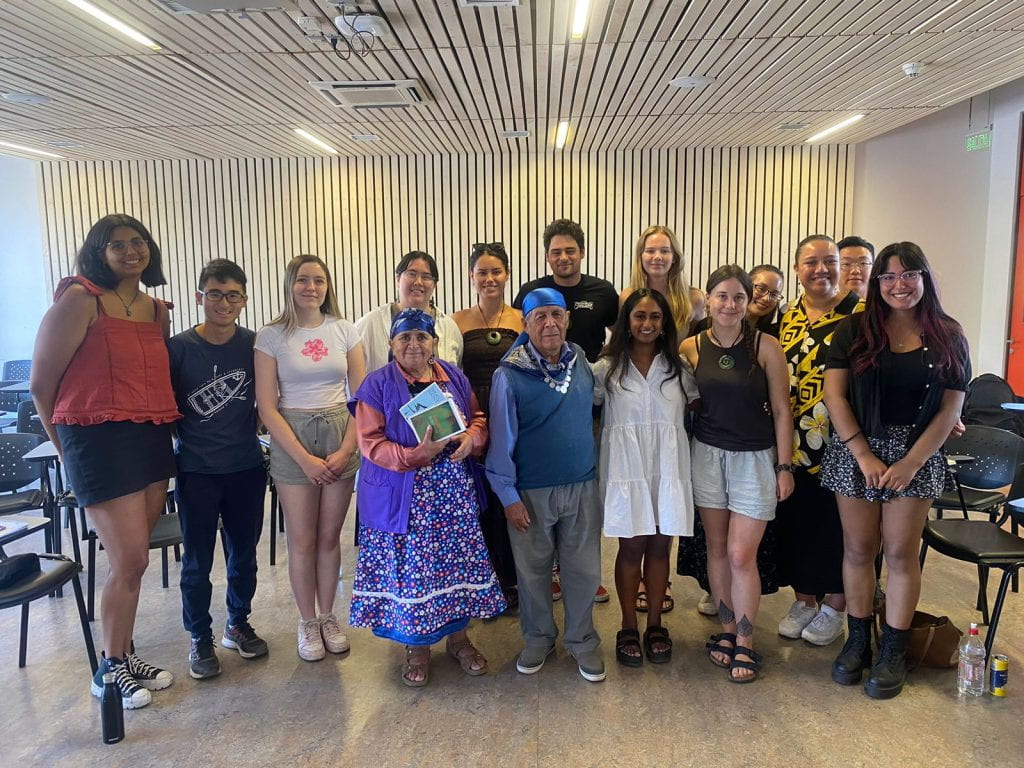
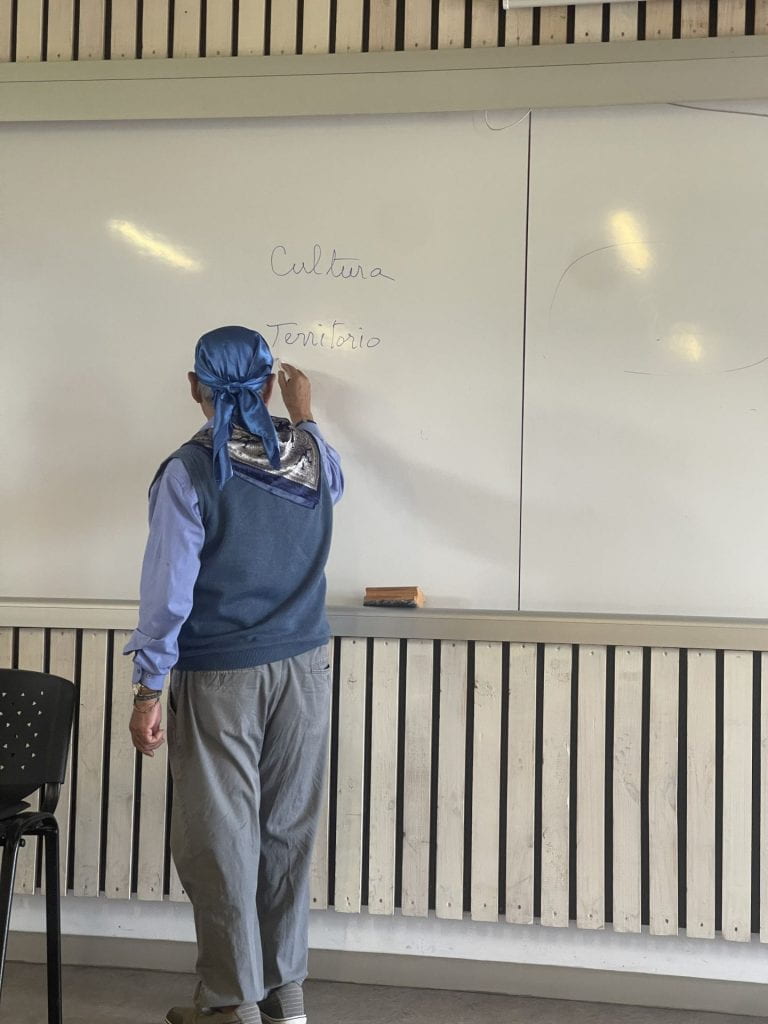
Ruka – a meeting place of people
On two occasions this week we found refuge from the heat of the day in the home of Mapuche people – a Ruka. We enter the Ruka from the east; a nod to the tikanga held by the Mapuche that each morning the sun warms the space, but also providing natural light and positive, cleansing energy, while the back of the Ruka holds negative energy. The floor is left untouched to be close to ñuke Mapu (Mother Earth) a reminder of the abundance we receive from ñuke Mapu and how we must give back, respect, protect and care for the earth. The Ruka Centers itself around the kütral – the Mapudungun word for the fire element, which is surrounded by volcanic stones. It is the main energy Center where families gather to cook, eat, share stores, have meetings and impart wisdom or knowledge to the younger generations. It is a place that in many ways reminds me of a marae. However instead of being split into a wharenui and whare kai it is an all-inclusive space where all functions occur simultaneously.
On the first occasion we went to a Ruka based in the commune of Carlos Valdavinos. Waiting outside the gates felt like the beginning of a pōwhiri. We were welcomed in by the community to learn about the various instruments they play and adornments they wear. From the cultrum, pifillka, TruTuca to the cascauilla we were talked through the various instruments and their purposes in the Mapuche cultural practices. The Mapuche present for our visit were the best teachers. They explained each and every practice as we gave thanks to the ancestors and ñuke Mapu. We finally shared in a beautiful kai that allowed us to sit and take in the ruka. It was a beautiful space that kept the room cool in the summer and warm in the winter. The walls were lined with various pictures and items that meant a lot to the Mapuche who utilised the Ruka. I am grateful for such a wonderful first experience within a Ruka and encourage all people visiting Chile to make time to learn from and be with Mapuche peoples.
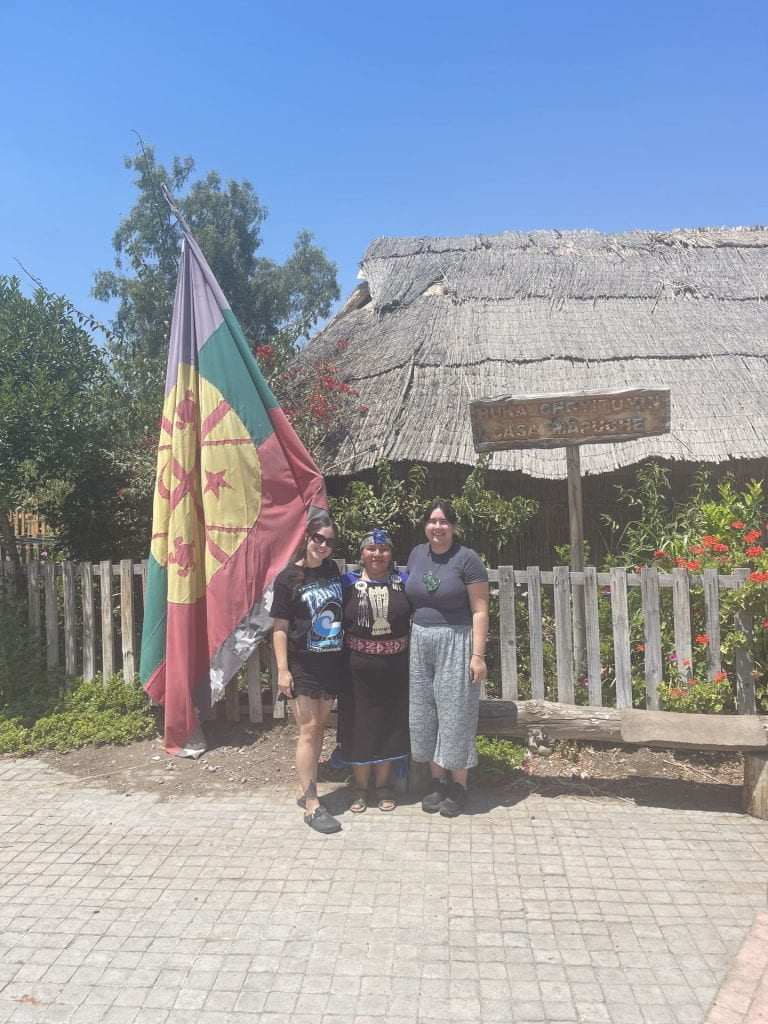
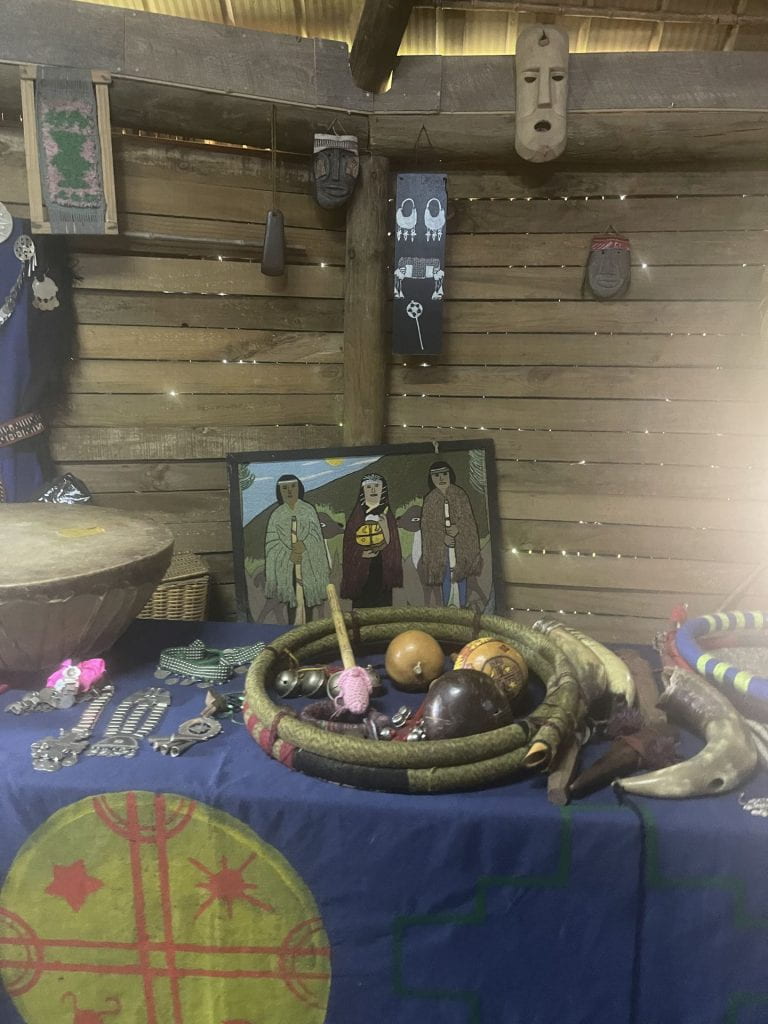
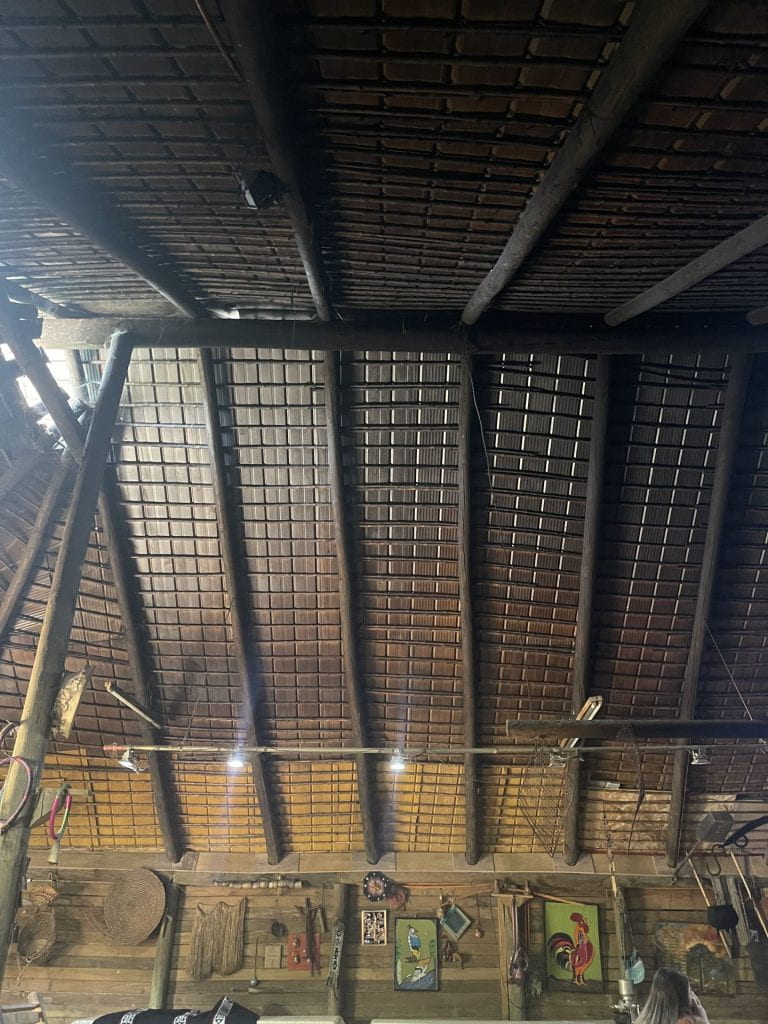
On the second occasion we went to the commune of La Pintana to spend the afternoon with the Kintu Rayen intercultural program team; guided through the experience by the wahine toa Presidenta de la Asociación Mapuche Taiñ Adkimm, María Hueichaqueo. The La Pintana clinic provides culturally safe care to both the Mapuche and non-indigenous peoples of the commune. When a patient expresses the desire to be treated by a Machi an intercultural facilitator is provided whom helps to connect up the care process. The practices of the Machi are not merely an accessory within the health system of La Pintana. It is seen as neither an alternative or complementary medicine, rather it is another form of medicinal option – a valid first choice of care. This evolving system stems from the understanding that Mapuche women in La Pintana were not accessing care due to fear of discrimination within the Western System nor was it a viable option to travel large distances to access a Machi. Thus, this programme is facilitating the increase in access to appropriate care for urban Mapuche – a protective health care model that is increasing in usage across the commune and in other areas of Chile.
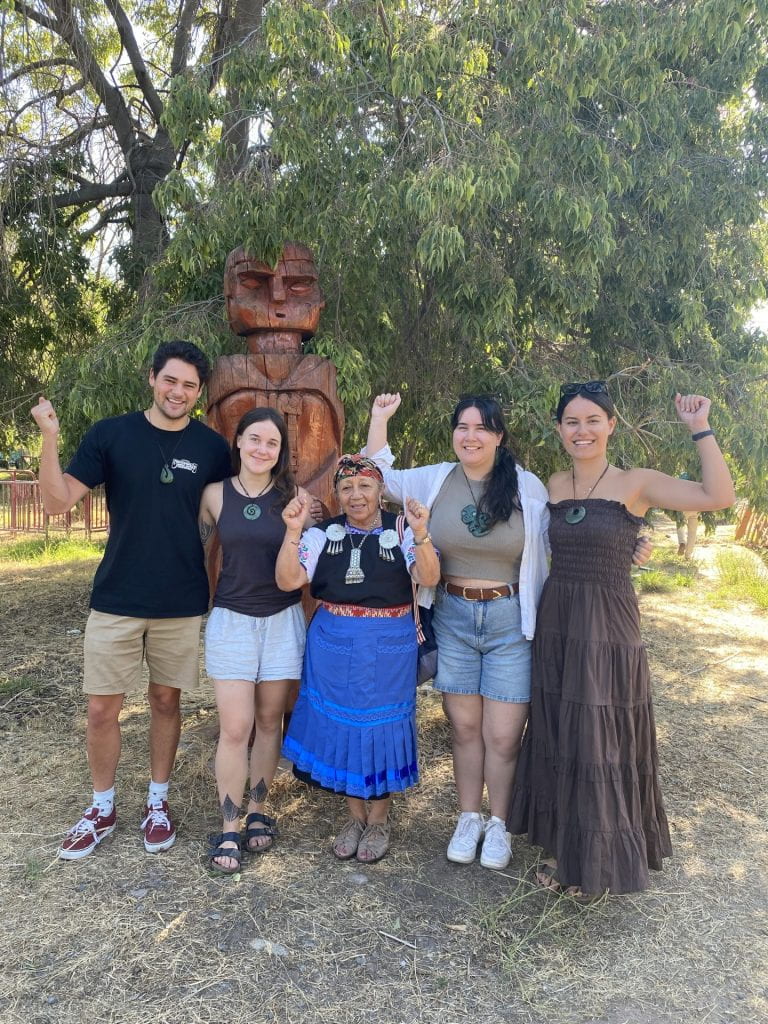
The Mapuche are a proud, happy, gentle people with unwavering respect for ñuke Mapu. Not only did they defend and protect their traditions and ways of life from the repeated invasions by various coloniser groups, but they also continually guard their own culture, and elevate the views of the environment.
Chaltu mai – thank you – to the many Mapuche people who spent their valuable time sharing their culture with our ropu. We are forever bound in solidarity with our indigenous brothers and sisters. I look forward to an enduring relationship of solidarity and knowledge-sharing to come!